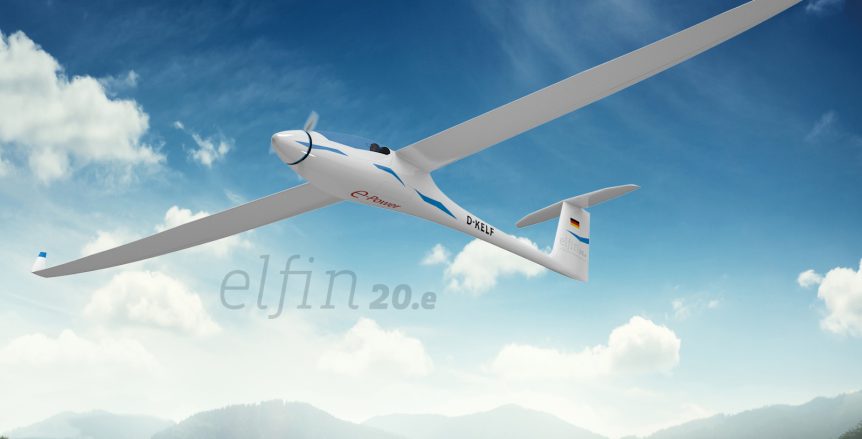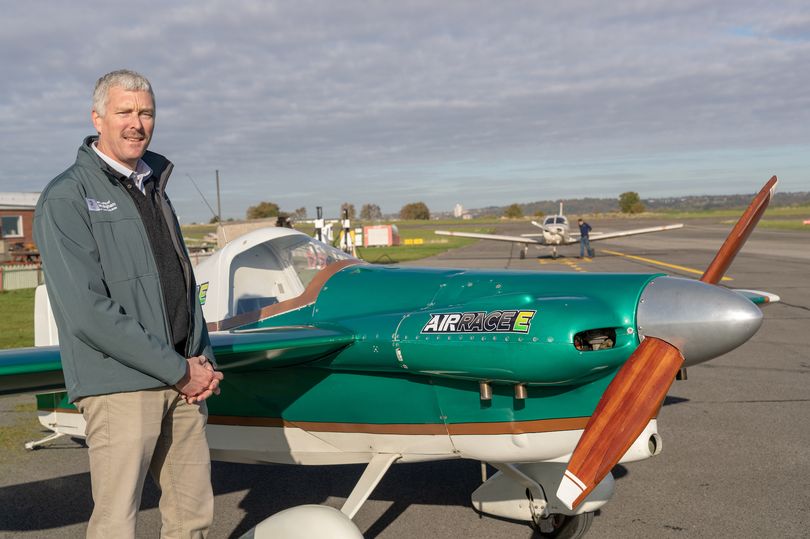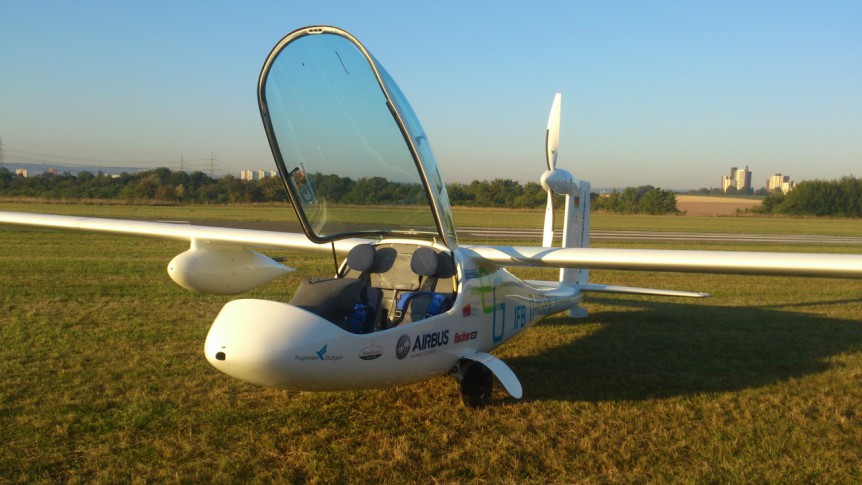Reiner Stemme designed his namesake sailplane 30 years ago and the overall design and his new Elfin retains the original pop-out nose cone, folding propeller configuration. The 50:1 glide ratio means this 20-meter (75-foot) span motorglider offers less than 40 pounds of drag at its maximum takeoff weight 0f 1984 pounds. That is a significant benefit for the new electrically-powered version – which can fly further and save its batteries for retrieval and go-arounds. In its latest iteration, the Stemme configuration is a totally new airframe being built by a totally new company, Reiner Stemme Aero GmbH. As explained on the new firm’s web site, “The Elfin design is a complete new development and [is] not base[d] upon the existing S10. REINERSTEMME.aero GmbH, the present company of Dr. Reiner Stemme, is not connected to STEMME AG.” A High-Flying Heritage Earlier Stemme designs have accomplished much in the way of efficient, high-performance flight. In 2014, Klauss Ohlman accomplished one trans-continental trip …
Richard Glassock, Jeff Zaltman and Air Race E
Richard Glassock and Beacons of Excellence Richard Glassock is an Australian scholar and designer currently living in Nottingham, England, working as a Professor at the University of Nottingnam. One if the founding lights in the Outback Joe competions, in which teams launched autonomuous aircraft into remote parts of Australia to find the eponymous character and deliver aid, he was on the forefront of things to come. Later, he designed a twin-motored sailplane to take parties of six or eight to cloudbase, a perfect outing for kid’s parties or adult’s anniversary celebrations. He was part of a team that designed a modern hybrid parachute jump plane, optimized for rapid turnarounds. His motorcycle range extender would enable a pilot to ride to the airport in style, and when connected to an electric or hybrid aircraft, provide long range – and at the end of the flight – a ride home. Not only a professor, Richard is project lead for this Beacon of …
e-Genius Flies with a Range Extender
Stuttgart to Barcelona Dipl-Ing* Ingmar Geiß, Deputy Project Manager for e-Genius with the Institute of aeronautical engineering at Stuttgart University shared the news that e-Genius flew with its range extender for the first time on September 15. He notes that while the battery-powered airplane can manage trips up to 300 kilometers (186 miles), the hybrid engine/generator pod will enable flights up to 1,000 kilometers (620 miles). This would equal a trip from Stuttgart to Barcelona, Spain, according to the e-Genius web site. As the school explains, “With [the] e-Genius hybrid most flights of a typical user case can be done in the cost and energy efficient battery mode – for all longer flights the range extender can be used. Generator system control requires no pilot input, everything being done automatically. If the pilot wants to set down at the end of a trip with a certain amount of battery energy on board, e-Genius has an ingenious “look-ahead” feature to modulate …
Batteries, Fuel Cells – or Something Else?
We’re coming to a parting of the ways in energy storage development for electric cars. Or we may be coming to a joining of technologies in new and previously unimagined ways. One side, led by Elon Musk and his Tesla Empire, promotes battery power and development. Yet, in Tesla’s home state of California, government and private investments in hydrogen vehicles is growing. Several Asian and European automakers are bringing out fuel cell powered vehicles in the face of low numbers of existing fueling stations. For all the promotion from either side, future “green” cars may become too expensive for private ownership, and various approaches to providing personal mobility may replace the traditional owner-driver model. Regardless of the outcomes or market shares, the technology will be applicable to personal aviation, although perhaps at a significant price. Battery-Powered Vehicles Lead – For Now According to EV World, “In the last year, global registrations of electric vehicles from the first three years of …
Even in Second Place, VC200 Dominates Awards
Volocopter has evolved from a pilot sitting on a Pilates ball surrounded by multiple model airplane motors to the VC200 – the first Volocopter to carry two people, according to parent company e-volo. As recipient of a 2 million euros grant from the federal ministry of economics and technology, e-volo has worked with a research and industry syndicate to craft the VC200. A sleeker, more finished-looking project than the original flight vehicle, the VC200 held pride of place 15 meters above the crowd attending the “GreenTec Awards” in Berlin, Europe’s largest environmental and economic prize. Completed just in time for the event, and assembled in the auditorium where it received its award, the first prototype of the VC200 was an ever-present reminder of its green credentials. Although the little “David” company earned a second place award, with “Goliath” Airbus taking top honors, “We are proud that we are placed tightly behind a global player such as Airbus,” said e-volo-CEO Alexander …



